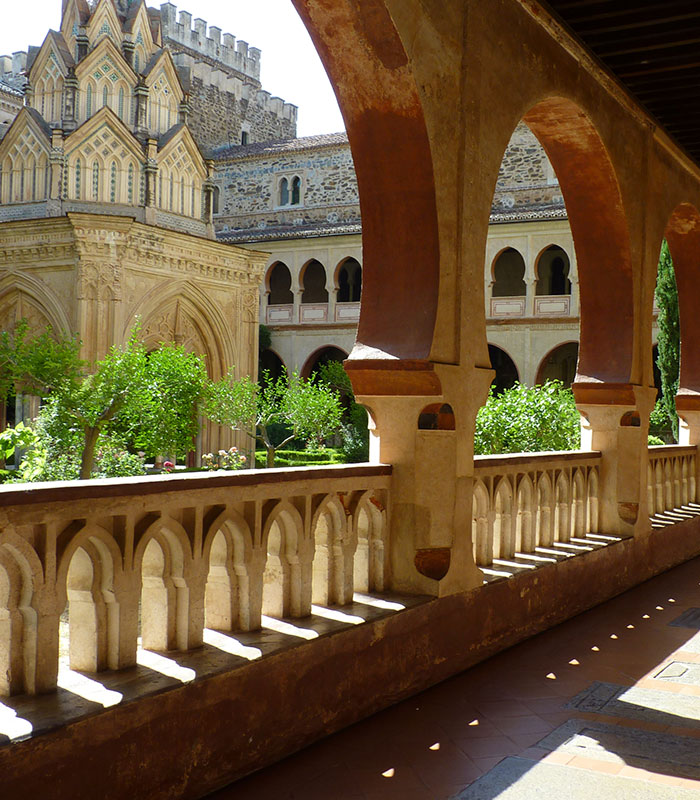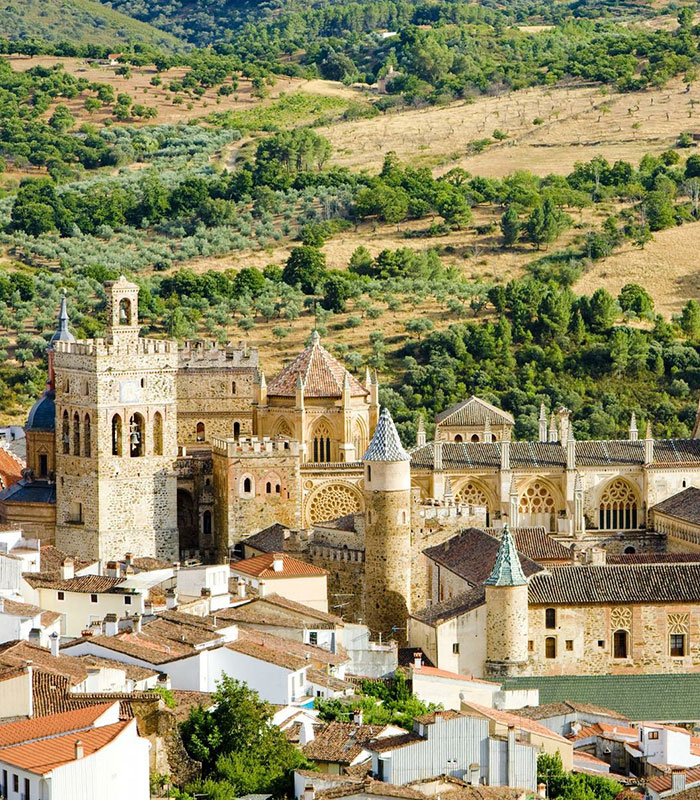Situated in the heart of Las Villuercas, the Real Monasterio de Santa María de Guadalupe is unique in many respects. Its construction began in the 13th century and continued for over five hundred years with a combination of styles such as Gothic, Renaissance, Mudejar, and baroque. The Monasterio houses the Virgen de Guadalupe of the early 14th century, the patron of Extremadura and the queen of La Hispanidad, and is an important religious and pilgrimage centre. For cultural, historical, artistic, and heritage reasons Guadalupe is an enclave of incalculable value.
According to tradition, the history of the sanctuary began when the cowherd Gil Cordero was seeking a lost animal near Alía. On finding it dead near the River Guadalupe he tried to skin it but to the man’s amazement the cow came back to life and a voice from heaven told him where he would find a hidden image of the Virgin. The same voice told him that right there was the best place for building a new chapel to house the image. Legendary happenings aside, the finding of the image may be part of the recurring pattern of religious objects hidden during the Arab invasion and found years later.
The fame of the site spread until it reached the court and the ears of Alfonso XI himself, who decided to visit it. As the king found that it was a small chapel virtually in ruins and that there was no inn or other infrastructures for the pilgrims who were already visiting the sanctuary, he gave lands and funds to build a church. With the passage of time successive monarchs also showed their interest and devotion for the sanctuary, among them John I (who made the church over to the Hieronymites) and Isabella the Catholic, who became an assiduous pilgrim to the shrine. It was precisely in Guadalupe where the Catholic Monarchs received Columbus on three occasions. As the number of pilgrims grew the monastery was successively enlarged and the religious community increased in size together with the volume of the artistic heritage.

